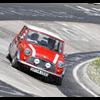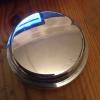Crankshaft Balancing
#1

Posted 29 June 2011 - 09:05 AM
Cheers
#2

Posted 29 June 2011 - 10:00 AM
It's a personal choice really and if you can afford it then it is not a bad thing to do. If doing it then you should also balance the con rods as they are a real source of out-of-balance forces, more so than the crank and flywheel actually.
#3

Posted 29 June 2011 - 11:30 AM
#4

Posted 29 June 2011 - 11:47 AM
#5

Posted 29 June 2011 - 12:06 PM
#6

Posted 29 June 2011 - 05:46 PM
1) Ensure that the damper is in excellent health, any less then throw it out
2) Ensure that the flywheel runs true and in line, ie no shimmy
3) Ensure that if your crankshaft has been reground that the crank was straight beforehand, otherwise it will oscillate
Quite simply if any of the above are not 100% then don't waste your money on a balance.
Balancing DOES NOT cure c*** parts !
I have seen crankshaft that have been reground, but were bent to start with.... and what hangs off the unground parts of a crank ? Yes 10 / 10 .... the flywheel and the damper.
#7

Posted 29 June 2011 - 06:20 PM
Edited by bmcecosse, 29 June 2011 - 06:21 PM.
#8

Posted 29 June 2011 - 06:40 PM
For, say, a race engine you need to do more than just balance everything. The best engines have their rods polished before balancing to relieve any potential stress-raisers and the crank is not just re-ground, it is 'stroked & indexed'. I know this was very expensive on the last 3 rally Mk.1 Cooper 'S's, but it was worth it I think. To explain 'stroking & indexing', (I know you know this already Martin!) there is an 'angular' and 'throw' tolerance with all cranks. Journals 1 & 4 should be exactly in line, as should 2 & 3. In practice, however, there is an slight difference of maybe a few minutes of arc. Also the throw, which determines the actual stroke length, has a manufacturing tolerance. 'Stroking & Indexing' removes these tolerances and, at the same time ensures that all main journals are exactly in line i.e. concentric.
This is necessary if you want to pull really high revs as with the 970 'S' which revved to 'gawd knows what'. It was surprising how far out a brand new and completely unused 1071 crank was when I built the 1071 'S'.
Martin, can you do this as the company in London I used to go to have closed down?
One thing it's more difficult, but not impossible, to correct is the centre lengths of the con rods. I think the nominal tolerance as designed was 0.0015", but I'm not absolutely sure about that. Do you do this tolerance removal Martin? When BMC used to build competition engines they selected rods with identical centre lengths, but we don't have that luxury now. This is not quite so critical, although it does make the pistons crowns come to different heights up the bore which is not ideal.
#9

Posted 29 June 2011 - 07:30 PM
Most machine shops can do this, although the best machines grip on the outer diameter ie the tail and sprocket / pulley end, instead of the inner centre drilling, or at least have an adjustable centre at both ends.
There are two different types of Grinder.... one where the head moves in and out as the crankshaft rotates, the other where the crankshaft is loaded wit the pins to be ground in line with the rotation of the machine.
0.0015" as high as that I was sure it was a lot lower than that, but I haven't got my book with me ??
To get better accuracy use a jig borer, which can get it closer, then followwith a hone, not one of those silly glaze busters that I recently found out a well known engine builder uses to hone his blocks
Still the main killer of crankshafts is people grinding a bent crank, because the nose & tail spin around out of centre...... need I say more.
#10

Posted 29 June 2011 - 07:51 PM
Can you also balance rods after they have been polished?
I was going from memory on the rod tolerance and as I said I could be wrong. But with BMC anything was possible!
However, when doing trial builds it is surprising how different the piston crown to block deck dimension can be. I've seen up to 0.004" and this is a combination of stroke difference, rod length and piston height above gudgeon pin centre-line. Modern pistons are pretty accurate one might guess with CAM techniques, but those old BMC/ARG/Rover rods and cranks are another matter.
It's not critical for road cars, but for competition where huge revs are involved it's another matter entirely. My son's 970 'S' would rev to around 8000+ (it was a rally car, not a full race car and the cam was a 286 with 1.5 rockers) and my 1071 with a 649 would go to 7500+ 'in extremis'. I don't like taking my 1310 'S' much over 7000 as it runs off the cam, but I have seen around 7200 and that's quite enough thank you! On those engines full and accurate balancing, stroking and indexing are, IMHO, very important.
#11

Posted 29 June 2011 - 08:07 PM
CAM has really only one place in Engineering, and that is to create repetitive cycles on complex parts... Think of it as mowing the lawn, if it was all straight then it would be simple, however if we introduce some very different curves then you need more control, it's pretty much the same with metal (apart from it smells different) CAM allows the system to create those complex paths that we see as very nice curvy things....
If you are simply milling a surface (block or head for example) then CAM doesn't come in to it.
Oh and yes we can balance conrods before or after polishing...
#12

Posted 30 June 2011 - 12:30 PM
Can you also balance rods after they have been polished?
Is it actually polishing? I am more familiar with rods being shot-peined to strengthen the outer surfaces and remove stress risers. Regardless, when I have seen rods balanced, they were only done for matching the assembled weight and the excess material was taken off the big end cap so the rod itself was left untouched. So Martin, you actually polish the rods?
I was making the point more for those who do not know..... it can be frustrating when you get drawings with dimensions like 599.999mm +/- 0.001mm it simply will not happen over such a length, often these drawings are created by a "designer" (Sorry to real designers) who just so happens to have learnt to use a cad terminal..
If that includes design engineers... I can put as many zeros as you would like on a tolerance. Most of us however are pretty aware that adding zeros adds cost. Most of what I do is dimensioned to +/- .005" until I get to dowel fits and bearing fits. In those situations we go for tighter tolerances but we still try to stay well within industry standards for what CNC tools can achieve. When you get down to tolerances at or below +/- .0005" you have to worry about things like the temperature the part will be used at and machined at.
#13

Posted 30 June 2011 - 12:50 PM
my engine builder found my crank to be out of balance by 17 grams, doesn't sound alot but when things are spinning at 6000rpm+...
to balance my crank and flywheel assembly was £60 and rods and pistons were £45, so a little bit expensive but worthwhile thing to do
#14

Posted 30 June 2011 - 01:05 PM
If the little end is heavy then it needs to be rectified, ie lightened.....
Balancing conrods is done on a highly accurate set of scales and should be done end to end, ie all little ends the same all big ends the same each rod identical in weight / mass.
any polishing must be down along the length,
.............
Yes Doug that is very true.
Design to requirement
1 user(s) are reading this topic
0 members, 1 guests, 0 anonymous users



















